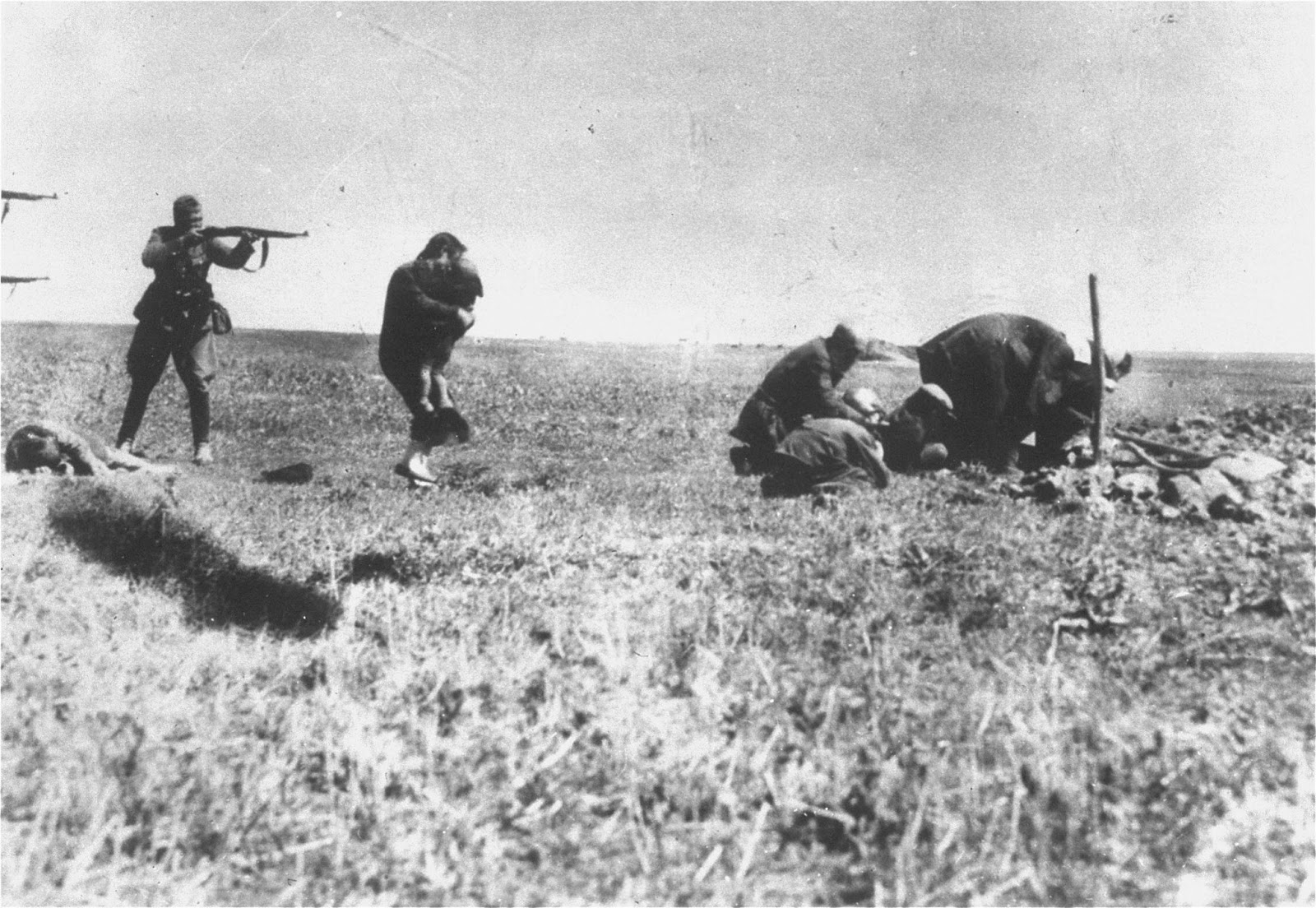The photo was mailed from the Eastern Front to Germany and intercepted at a Warsaw post office by a member of the Polish resistance collecting documentation on Nazi war crimes. The original print was owned by Tadeusz Mazur and Jerzy Tomaszewski and now resides in Historical Archives in Warsaw. The original German inscription on the back of the photograph reads: “Ukraine 1942, Jewish Action [operation], Ivanograd”. This photo is considered, in the words of British journalist Robert Fisk, “one of the most impressive and persuasive images of the Nazi Holocaust”. It was featured in numerous books, and at photo exhibits both in Poland and Germany, as “precious and terrible evidence” of “the Nazi cruelties in Eastern Europe”. In 1964, at the height of the Cold War, the popular German weekly Der Spiegel (Nr. 49/1964) published the photograph along with a diatribe naming several angry readers claiming it to be a fake generated by the Russians, although the most incriminating evidence came from the official German records. Confronting a society with photographic evidence of one’s own personal experience of war is almost as old as photography itself, wrote reporter-turned-historian Janina Struk, who discussed this image in her Private Pictures: A Soldiers’ Inside View of War. In extreme situations the “possession of such private pictures could lead to a court-martial”, and yet soldiers keep taking them. Between 1941 and 1945, approximately 3,000,000 Ukrainian and other non-Jewish victims were killed as part of Nazi extermination policies, along with between 850,000 – 900,000 Jews who lived in the territory of modern Ukraine. Original plans of genocide called for the extermination of 65% of the nation’s 23.2 million Ukrainians, and the remained of inhabitants to be treated as slaves. In ten years’ time, the plan effectively called for the extermination, expulsion, Germanization, or enslavement of most or all Ukrainians. Notify me of new posts by email.
Δ Subscribe
